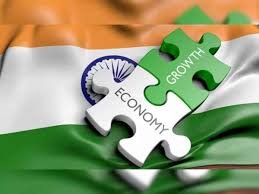NCAER Projects Over 7% Growth for Indian Economy in Fiscal 2025
The National Council of Applied Economic Research (NCAER) has projected a robust growth trajectory for the Indian economy in the fiscal year 2025. This projection comes amidst various economic indicators pointing towards recovery and expansion. According to NCAER’s latest forecast, India is poised to achieve a growth rate exceeding 7% in the upcoming fiscal year, marking a significant rebound from the economic challenges posed by the COVID-19 pandemic.
The projection by NCAER underscores the resilience of India’s economic fundamentals and the efficacy of policy measures implemented to stimulate growth across sectors. This optimistic outlook is driven by several factors, including increased industrial production, expanding service sector activities, and a revival in consumer demand. Additionally, the government’s emphasis on infrastructure development and digital initiatives is expected to bolster economic activities and employment generation.

Why this News is Important
Positive Economic Outlook Amidst Recovery Efforts
The NCAER’s projection of over 7% growth for the Indian economy in fiscal 2025 holds significant importance for aspirants preparing for government exams. Here’s why:
Impact on Policy Making and Planning
The forecasted growth rate provides crucial insights for policymakers to strategize fiscal policies and development initiatives. It guides governmental efforts in promoting economic stability and sustainable growth.
Implications for Employment and Sectoral Opportunities
A robust economic growth projection signals potential opportunities across various sectors, including banking, railways, defense, and civil services. Aspirants can expect increased job openings and career prospects aligned with the expanding economy.
Historical Context
Background of Economic Growth and Policy Interventions
Historically, India has experienced varying growth rates influenced by domestic policies, global economic trends, and socio-political factors. Post-liberalization in the 1990s, India witnessed accelerated growth fueled by economic reforms, globalization, and technological advancements. However, economic fluctuations and external shocks have periodically challenged sustained growth.
Key Takeaways from “NCAER Projects Over 7% Growth for Indian Economy in Fiscal 2025”
| Serial No. | Key Takeaway |
|---|---|
| 1. | NCAER projects over 7% growth for the Indian economy in fiscal 2025. |
| 2. | This forecast reflects confidence in India’s economic recovery post-COVID-19. |
| 3. | Policy measures and sectoral expansions are pivotal in achieving this growth. |
| 4. | Aspirants can anticipate increased job opportunities across various sectors. |
| 5. | Economic projections aid in formulating effective government policies and strategies. |
Important FAQs for Students from this News
What is NCAER’s projection for India’s economic growth in fiscal 2025?
- NCAER has projected over 7% growth for the Indian economy in fiscal 2025.
What factors are driving India’s economic growth according to NCAER?
- Factors include increased industrial production, expansion in the service sector, revival in consumer demand, and government initiatives in infrastructure and digital sectors.
How does economic growth projection impact job opportunities?
- Higher growth forecasts suggest potential job openings across sectors such as banking, railways, defense, and civil services.
Why is this projection significant for policymakers?
- It provides insights for formulating economic policies aimed at sustaining growth and stability.
What historical context influences India’s economic projections?
- Historical factors include economic reforms, globalization trends post-liberalization, and periodic challenges from global economic fluctuations.
Some Important Current Affairs Links


















